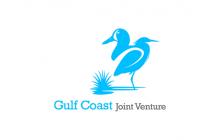
Matching federal funds support 19 wetlands conservation projects in Louisiana
By Jessica Shea
Driving into Gueydan, Louisiana the first thing a visitor notices is the town’s sign self-proclaiming it as the duck capital of America. The town’s population of 1,400 swells during the annual duck festival, complete with duck and goose calling contests and a duck festival queen. Though Gueydan is primarily supported through agriculture, specifically rice growing, waterfowl are important to the people, to say the least.
White Lake Preserve sits 10 miles from Gueydan. The more than 70,000-acre property was owned by BP Amoco; the oil and gas company used it as a corporate retreat site, explains Barry Wilson. Wilson works as a wildlife biologist for the U.S. Fish and Wildlife Service and has lived in southwestern Louisiana for the past 28 years.
“White Lake Preserve has some of the highest quality coastal marsh in Louisiana because it is in relatively pristine condition,” notes Wilson. Because the area was owned by BP Amoco, it was not split up and sold as smaller pieces of land. Moreover, the company took good care of the property by maintaining the levees. “The preserve was not subjected to saltwater intrusion, like a lot of marshes in southwestern Louisiana.”
BP Amoco donated the area to the state of Louisiana. The state used funds from the North American Wetland Conservation Act (NAWCA) to refurbish a levee on the western boundary of the property. “A wildfire had burned some of the organic matter on the levee, which reduced its effectiveness,” says Wilson.
The work brought the levee back up to a standard that allowed for effective water management. Functional levees are important because they are used to manage the water level for wintering waterfowl.
Water management also helps keep the salinity of the marsh low. “Lower salinity marshes are far more diverse and abundant vegetatively,” explains Wilson. “Lower salinity levels makes the marshes valuable as foraging habitat for waterfowl because less saline water supports more plant species, especially those important as waterfowl food.”
The role of NAWCA and the associated White Lake Preserve matching funds went much further than refurbishing the levee on the White Lake property. When BP Amoco donated the property to the state in 2002, it was worth $40 million. The donation was eligible as a non-federal match for NAWCA and subsequently used to support 19 NAWCA projects with six partner organizations across southwestern Louisiana.
NAWCA has provided funding for wetland habitat conservation projects across North America since 1989. Over the past 30 years, NAWCA has grown into one of the most significant conservation programs in history. More than 3,000 NAWCA-funded projects have conserved 30 million acres of wetlands and related habitats. The projects span nearly every state, territory, and province in Canada, the U.S., and Mexico. The goal of the multi-billion dollar grant program is to guarantee waterfowl and other wetland-dependant species a diversity of habitats across the continent, from breeding to wintering grounds, in perpetuity.
Habitats conserved through NAWCA projects have far reaching impacts. NAWCA-funded projects across Canada, the U.S., and Mexico have improved birdwatching, hunting, fishing, and other outdoor recreation opportunities on public lands. The conserved wetlands also store water and recharge aquifers, which helps secure future water supplies. Healthy wetlands also improve water quality by removing phosphates, nitrogen, and pesticides. When wetlands are restored to their natural states, they help prevent soil erosion during floods.
While there are many sources of conservation funding in Louisiana, NAWCA funding most effectively brings partners to the joint venture table, says Wilson, who is the coordinator for the Gulf Coast Joint Venture. “That carrot is really important to the strength of joint venture partnership because it allows us to engage with partners over the longer term than just the lifespan of the project.”
Migratory bird joint ventures are regional partnerships of government agencies, non-profit organizations, corporations, tribes, and individuals that conserve habitat for the benefit of priority bird species, other wildlife, and people, according to the U.S. Fish and Wildlife Service.
Wilson says he would like groups such as waterfowl conservationists (typically hunters), non-game conservationists, and local governments to be better aligned with a common voice for conservation. “All such groups derive benefits from conserved lands like White Lake Preserve, so I would like to see them collaborate working toward its sustained future health,” Wilson says.
“Ultimately, I would like to see a greater proportion of Americans feel like programs such as NAWCA matter to them, which would engender a greater base of political support for those programs,” says Wilson. “This would magnify the voices promoting conservation in society.”
Priority bird species, such as mottled ducks and king rails, as well as a variety of other bird, animal, and plant species will continue to benefit from the conservation of White Lake Preserve for years to come.
